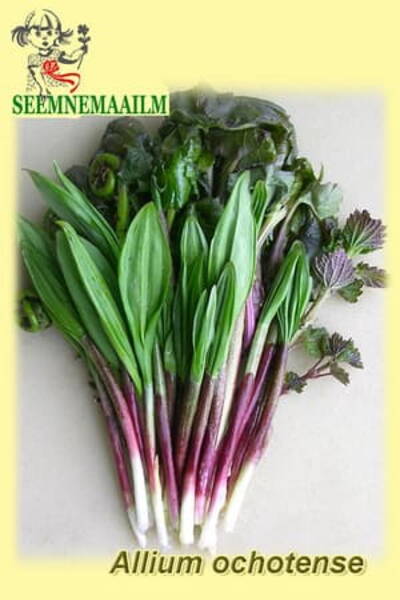Your shopping cart is empty!
Okhotsk onion (korean wild garlic)
Okhotsk onion (Victory-leek) - Allium ochotense.
Perennial. Height 80 cm. The plant grows from April to late September. Blooms in May-June. Seeds ripen in August.
Reproduction is seed and vegetative. When sowing in boxes, seedlings appear a year later in May. Blooms in the 4th year.
Flowers collected in a spherical umbrella, numerous. Perianth is whitish-greenish, 4-5 mm long. Stamens six, pistil with upper three-celled ovary. The fruit is a box. Seeds are black, spherical. After seeding, the aerial parts die off.
Introduced into a culture in China and Japan. Recommended for landscaping as an early spring culture in group plantings in gardens of continuous flowering.
Food plant. Industrial raw materials are leafy shoots and a leaf with a sharp garlic smell.
In everyday nutrition, it is used as fresh early spring greens: shoots up to 25 cm long (stems with unfolded young leaves). Bulbs and stems - used as a fresh seasonal vegetable, fresh, frozen, salted and dry. And also, as spicy aromatic greens, it is included in the composition of dry seasonings and thick sauces, as a component of cold, hot appetizers and salads, as part of the first and second hot and cold dishes.
The use of the plant is especially popular in Russia and Japan, where it is traditionally used in national cuisine.
The composition of this onion includes glycosides, enzymes, inulin, vitamins C, A, B1, B2, PP and phytoncides found in the leaves and bulbs, which inhibit the growth of pathogenic microorganisms. This onion improves appetite and digestion.
In Chinese and Tibetan medicine, all parts of wild garlic are used for beriberi, gastrointestinal diseases, gastroenteritis and neurasthenia.
Perennial. Height 80 cm. The plant grows from April to late September. Blooms in May-June. Seeds ripen in August.
Reproduction is seed and vegetative. When sowing in boxes, seedlings appear a year later in May. Blooms in the 4th year.
Flowers collected in a spherical umbrella, numerous. Perianth is whitish-greenish, 4-5 mm long. Stamens six, pistil with upper three-celled ovary. The fruit is a box. Seeds are black, spherical. After seeding, the aerial parts die off.
Introduced into a culture in China and Japan. Recommended for landscaping as an early spring culture in group plantings in gardens of continuous flowering.
Food plant. Industrial raw materials are leafy shoots and a leaf with a sharp garlic smell.
In everyday nutrition, it is used as fresh early spring greens: shoots up to 25 cm long (stems with unfolded young leaves). Bulbs and stems - used as a fresh seasonal vegetable, fresh, frozen, salted and dry. And also, as spicy aromatic greens, it is included in the composition of dry seasonings and thick sauces, as a component of cold, hot appetizers and salads, as part of the first and second hot and cold dishes.
The use of the plant is especially popular in Russia and Japan, where it is traditionally used in national cuisine.
The composition of this onion includes glycosides, enzymes, inulin, vitamins C, A, B1, B2, PP and phytoncides found in the leaves and bulbs, which inhibit the growth of pathogenic microorganisms. This onion improves appetite and digestion.
In Chinese and Tibetan medicine, all parts of wild garlic are used for beriberi, gastrointestinal diseases, gastroenteritis and neurasthenia.
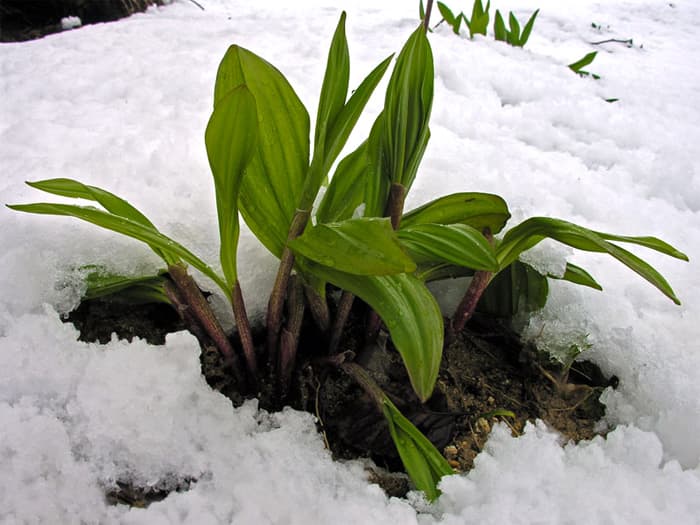
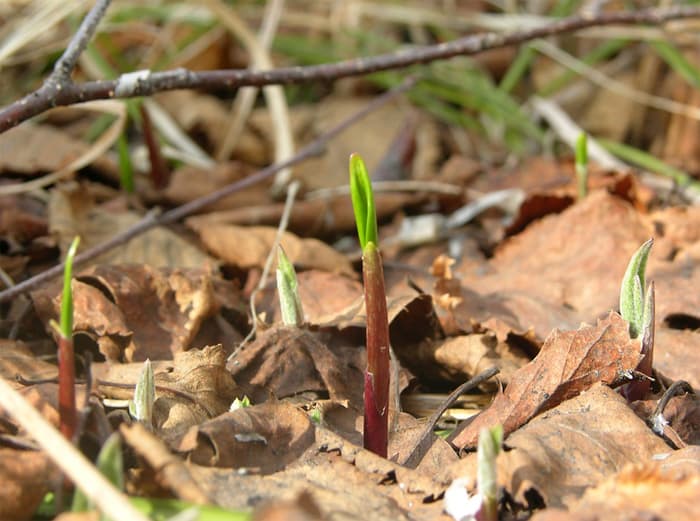
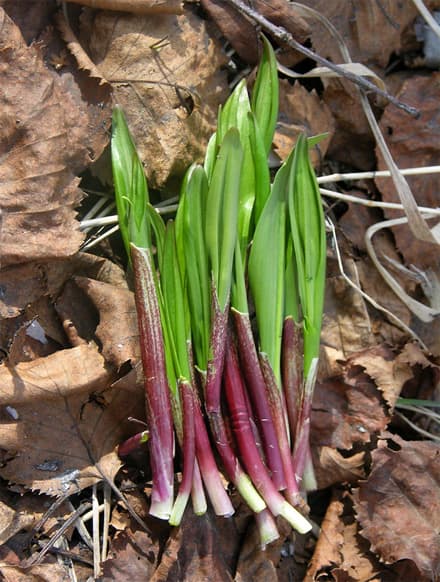
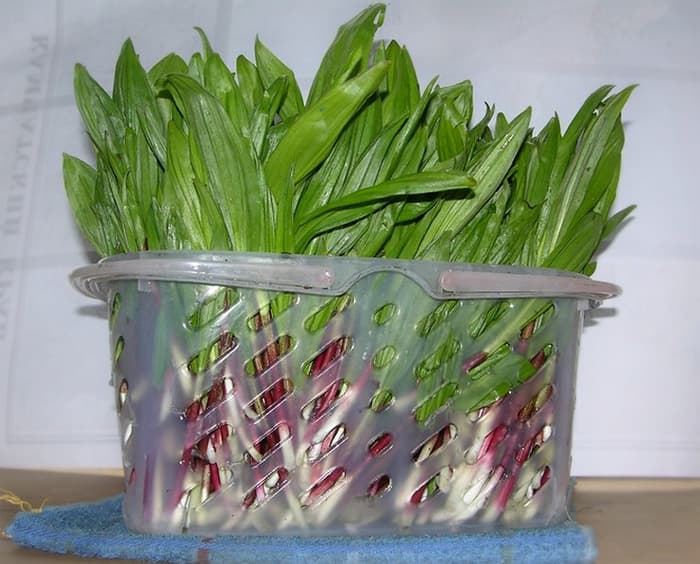

Okhotsk onion, korean long-rooted garlic, korean wild garlic, alpine leek, serpent's garlic, Victory-leek. Bot. syn.: Allium latissimum Prokhorov, Allium plantagineum Lamarck; Allium victorialis L. forma variegatum (Nakai).






